Sioux Falls, SD Pollen and Allergy Report for Summer 2023
Pollen Allergy Trends in Sioux Falls, SD
When is pollen lowest in Sioux Falls, SD?

February
Lowest month total PPM
Avg. PPM
When is pollen highest in Sioux Falls, SD?

April
Highest month total PPM
Avg. PPM
How does pollen in Sioux Falls, SD compare to South Dakota?
Sioux Falls has a lower average PPM than the state of South Dakota.
Sioux Falls yearly avg PPM:
South Dakota yearly avg PPM:
How does pollen in Sioux Falls, SD compare to the USA?
Sioux Falls has a higher average PPM than the USA.
Sioux Falls yearly avg PPM:
USA yearly avg PPM:
Is pollen worse this year in Sioux Falls, SD?
Spring 2023 was worse than spring 2022.
Spring 2023 PPM:
Spring 2022 PPM:
Average PPM in Sioux Falls, SD
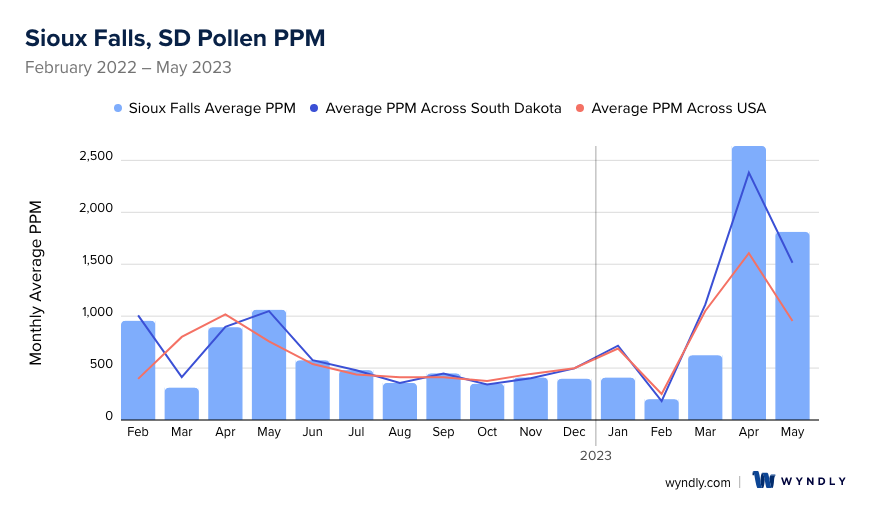

Sioux Falls, SD Pollen and Allergy Breakdown by Month
Grass
When is grass pollen highest in Sioux Falls, SD?
February has the highest grass pollen in Sioux Falls, SD with an average PPM of
When is grass pollen lowest in Sioux Falls, SD?
October has the lowest grass pollen in Sioux Falls, SD with an average PPM of
Tree
When is tree pollen highest in Sioux Falls, SD?
April has the highest tree pollen in Sioux Falls, SD with an average PPM of
When is tree pollen lowest in Sioux Falls, SD?
October has the lowest tree pollen in Sioux Falls, SD with an average PPM of
Weed
When is weed pollen highest in Sioux Falls, SD?
April has the highest weed pollen in Sioux Falls, SD with an average PPM of
When is weed pollen lowest in Sioux Falls, SD?
February has the lowest weed pollen in Sioux Falls, SD with an average PPM of
Sioux Falls, SD Pollen Monthly Breakdown by Pollen Type
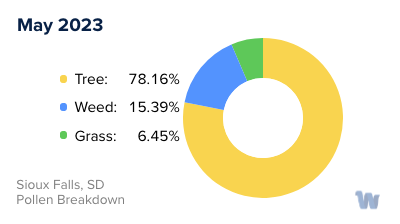
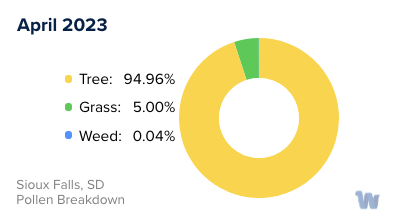
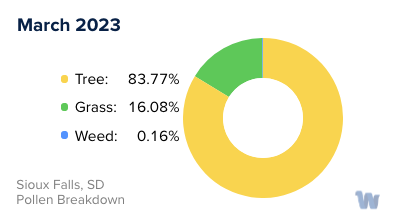
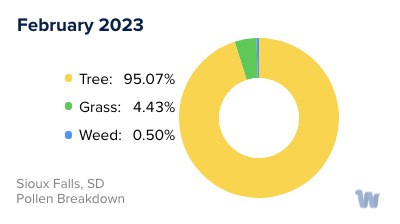
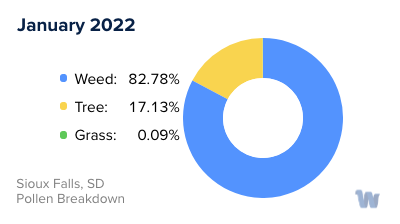


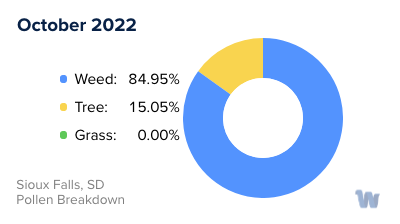
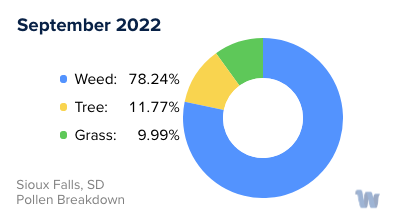
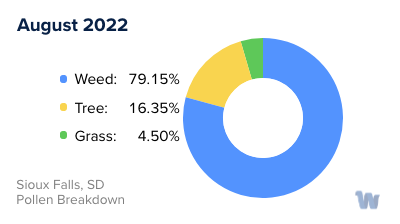
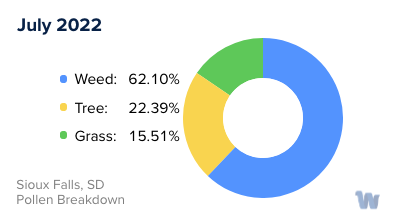





Pollen and Hay Fever in Sioux Falls, SD
Pollen allergies, often referred to as hay fever, are a common concern for residents of Sioux Falls, South Dakota. This type of allergy is triggered by the inhalation of tiny grains of pollen released by plants for reproduction. For the allergy sufferer, this seemingly harmless process can translate into a plethora of bothersome symptoms like itchy eyes, runny nose, and persistent sneezing.
In Sioux Falls, the main culprits behind pollen allergies are trees, grasses, and weeds. Each of these categories releases pollen at different times of the year, leading to distinct 'pollen seasons'. Understanding these seasons can help you anticipate when symptoms may occur and plan your outdoor activities accordingly.
Spring is typically tree pollen season in Sioux Falls. The city is home to a variety of trees such as oak, cedar, and pine, each producing copious amounts of pollen that can trigger allergies. As spring progresses, the focus shifts from tree pollen to grass pollen. Grasses such as Kentucky bluegrass, ryegrass, and Timothy grass are prevalent in this region and their pollen can prove troublesome for many.
As summer unfolds and transitions into early fall, grass pollen starts to recede, but this doesn't mean a respite for allergy sufferers. This time of the year marks the beginning of weed pollen season. In Sioux Falls, ragweed is the primary offender. This hardy plant thrives in the midwestern climate and is highly prolific in its pollen production.
Although the concentrations and types of pollen can vary year to year due to factors like weather and temperature, this general pattern holds true for Sioux Falls. By being aware of these pollen seasons, residents can better understand their pollen allergies and manage their symptoms. Although we aren't discussing treatments or remedies here, it's always a good idea to consult with a healthcare provider if you have concerns about allergies. They can provide guidance based on your specific circumstances and help you navigate the pollen seasons in Sioux Falls.

